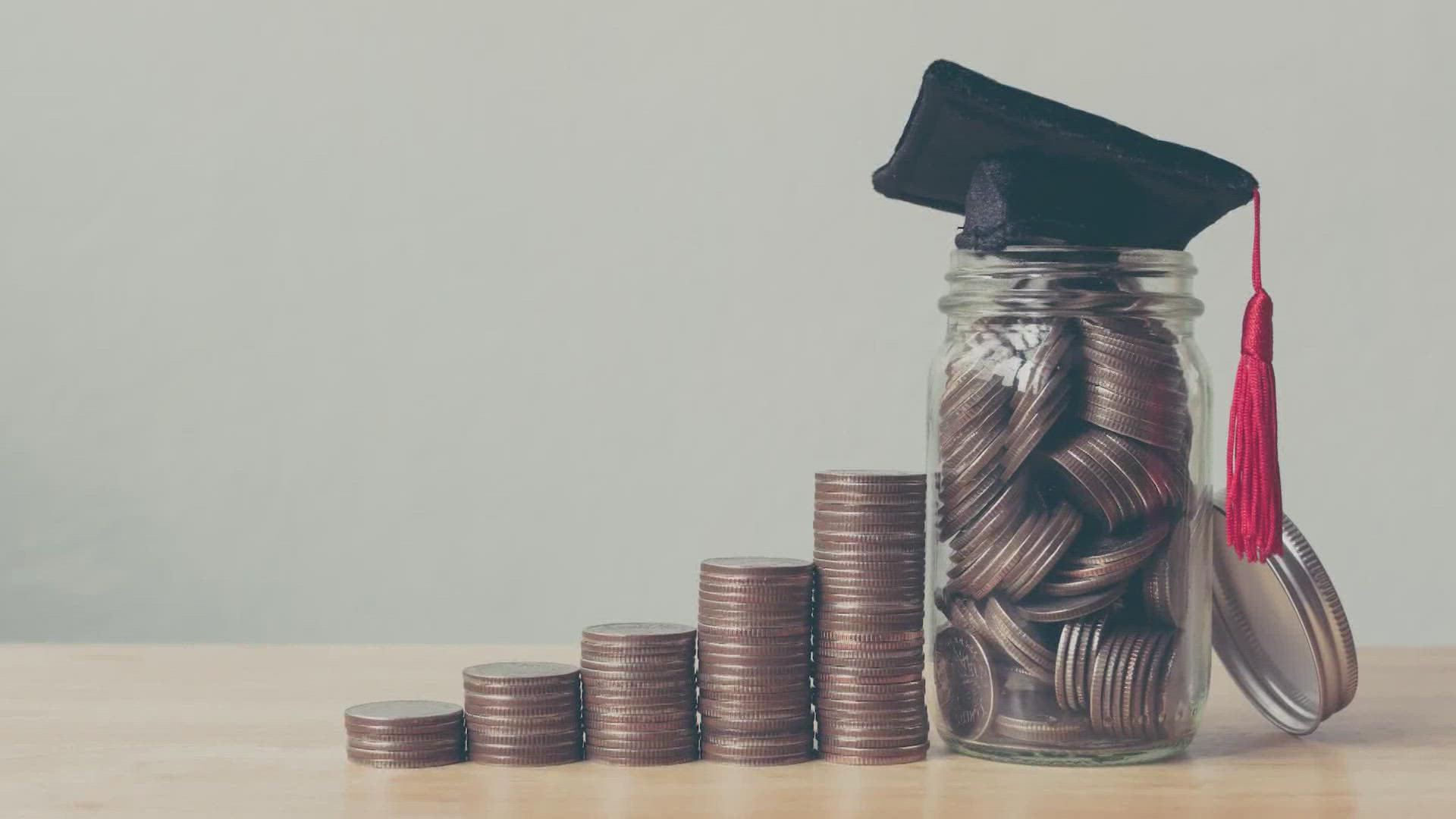While millions of Americans will likely soon have fewer student loans to pay off because of a new federal relief plan, some experts are worried about what type of impact this could have on the economy.
President Joe Biden provided some details Wednesday revolving around his plan to cancel student debt for millions of Americans.
Borrowers who earn less than $125,000 a year, or families earning less than $250,000, would be eligible for the $10,000 loan forgiveness, Biden announced. For those who also receive Pell Grants, which are reserved for undergraduates with the most significant financial need, the federal government would cancel up to an additional $10,000 in federal loan debt.
"An entire generation is now saddled with unsustainable debt in exchange for an attempt at a college degree,” Biden said.
These student loans will still have to be paid for in some capacity, according to SMU’s Mike Davis. He is an economist for the university’s Cox School of Business.
"There is no such thing as a free lunch,” Davis said. “If you forgive this amount of debt, it's just like the government is spending that money."
According to a new CNBC poll, 59% of Americans are worried debt forgiveness could make inflation worse.
"We have to be alert to the inflationary problem that this might cause,” Davis said.
The Biden administration said this relief is focused on helping low- and middle-income families since those in the top 5% of income can't benefit.
"Both of these targeted actions are for families who need it the most,” Biden said.
However, based on a 2022 study from Hutchins Center on Fiscal and Monetary Policy, the top 40% of households, ranked by income, owe 68% of our student debt. The bottom 20% owe only 2%.
Similarly, a July 2022 study from Education Data Initiative said that Americans with income higher than the national average owe an estimated 65% of the nation’s outstanding student loan debt. Households in the lowest income quartile owe an estimated 12% of all student loan debt, according to the study.
Andrew Lautz is the director of federal policy for the National Taxpayers Union Foundation. He said he worries that a broad relief fund such as the one the Biden Administration is planning to put in motion won’t target the people who need the support the most.
"I do worry that this policy, however well-intentioned, ultimately does help out a lot of people who probably don't need the federal government's assistance,” Lautz said. "We are borrowing future generations' wealth to fund this policy right now."
He recently put together an article looking at the potential cost of student debt cancellation on taxpayers. said that based on a Penn Wharton Budget Model, the cost of this student debt relief could be $329.1 billion over 10 years.
With that in mind, the average cost for the taxpayer would theoretically be about $2,085.59 per person. When taking into account shares of taxes for low- and middle-income households, Lautz’s estimates show:
- The average cost of student debt cancelation per taxpayer making between $1 and $50,000 is $158.27
- The average cost per taxpayer making between $50,000 and $75,000 is $866.87
- The average cost per taxpayer making between $75,000 and $100,000 is $1,477.78
- The average cost per taxpayer making between $100,000 and $200,000 is $3,158.35
- The average cost per taxpayer making between $200,000 and $500,000 is $9,947.92
Lautz said it’s also important to note many people right out of college with debt are in income brackets they will move out of through internal growth through their career or with workplace experience.
Even with debt, college graduates from 25-34 have an unemployment rate of 2.8%, according to statistics from the online database Federal Reserve Economic Data. Those in the same age range who didn’t go to college, they have a 4.6% unemployment rate.
Lautz said the main three ways the federal government will cover these students loans are:
- Decrease government spending
- Increase taxes
- Increase borrowing and debt
"There are no doubt some low-income folks and some folks who are struggling who benefit from this policy, and it's OK to acknowledge that," Lautz said. "But I also think there are a lot of people, probably in the long run, who do not urgently need the federal government's assistance.
Both Davis and Lautz said increasing the budget deficit at the federal level has the potential to have lasting negative effects on the economy.
"At this point, there's no use even arguing about that," Davis said. "We know that all the money the government spent since the pandemic, has directly contributed to the inflation we're seeing now."
"Our country is tens of trillions of dollars in debt right now," Lautz said. "We need to be focusing on reducing debt and deficits rather than increasing them."

